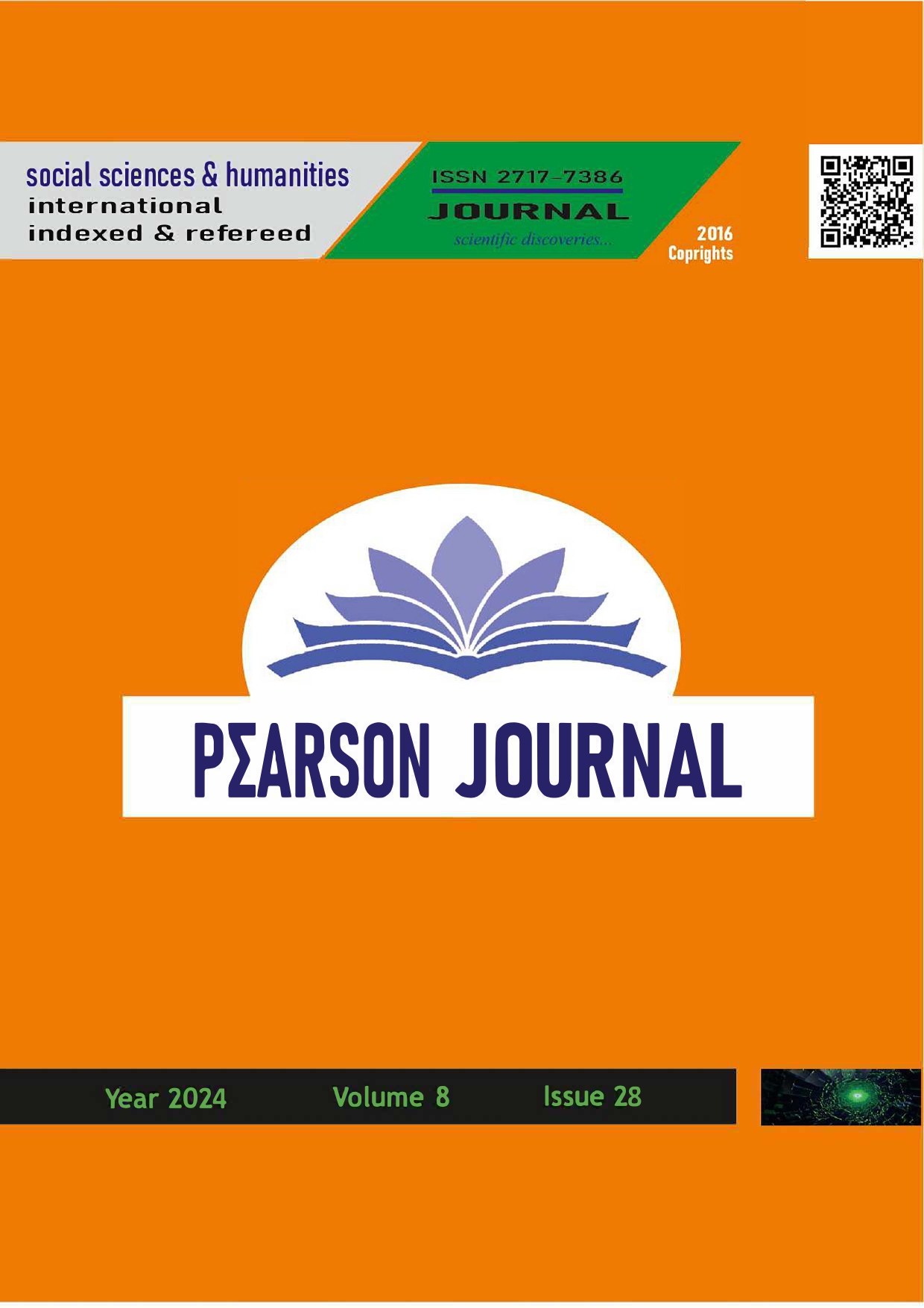Actors of Gold Markets in Türkiye and Their Contribution To The Financial System
DOI:
https://doi.org/10.5281/zenodo.11580876Keywords:
Gold, Gold Markets, Financial Stability, Economic EfficiencyAbstract
Many studies reveal that the development levels of countries are parallel to the development levels of their financial markets. Considering that our country is in the category of developing countries, it is seen that our financial markets are still developing, and the diversity of our investment instruments and portfolios is limited when compared to the financial markets and economic systems of developed countries. In our country, where financial markets develop slowly and investment tools in money and capital markets are limited, financial literacy has increased especially in recent years as a result of the opportunities provided by developing technological opportunities, and gold-based financial instruments and gold derivative products have become more preferred. For this reason, the number of investment instruments in gold markets has increased in proportion to this interest, and gold and gold-based financial instruments have gradually strengthened their place in the economic system as an indispensable element of savings for investors and capital for companies.
At the same time, if we consider that risk is the main factor in decision-making of individual and institutional investors, risk is a rudder that directs the investment preferences of individuals and organizations in different scenarios that may arise in financial markets. Especially in periods when economic uncertainty and instability prevail, savers tend to keep a part of their investments, companies a part of their capital, and central banks a part of their reserves. The basis of this trend lies in the instinct of savers and investors to get their investments and savings out of economic or political crisis periods with as little loss of value as possible. Parties who want to make low-risk investments prefer alternative investment instruments or assets that are less risky among various investment instruments or assets with similar returns. The first of general actions taken for this is to transfer the risks of existing assets to gold, which is accepted as a value protection and value storage tool. In order to these decisions taken to minimize future risks to be accurate, the relations between fluctuations and trends in prices of instruments in money and capital markets and gold prices must be predicted.
In this context, in our study, we aim to regulate pricing behavior with organized structures, create free market conditions, develop and diversify gold and gold-based instruments, activate inefficient resources within the financial system, ensure that idle and dysfunctional resources are brought into the economy, reduce unregistered activities. In order to support development of the economy, enrich investor base, complete integration of individual and corporate investors with international markets, ensure and maintain price stability in the markets, the actors and activities of the gold markets in our country were discussed, and their contributions to the economic system in general and the financial system in particular were evaluated.
References
Aksoy, M., & Topçu, N. (2013). Altın İle Hisse Senedi ve Enflasyon Arasındaki İlişki. İktisadi ve İdari Bilimler Dergisi (27): 3.
Altın Madenciler Derneği. (2023, 02 2021). altinmadencileri.org.tr. altinmadencileri.org.tr web sitesi: https://altinmadencileri.org.tr/turkiyenin-altin-ithalati-3/
Aslan, S. (1999). Altın ve Altına Dayalı İşlemler Muhasebesi. İstanbul: AB Yayınları.
Aslan, S. (2022, 08 18). mevzuat.gov.tr. mevzuat.gov.tr web sitesi: http://www.mevzuat.gov.tr/MevzuatMetin/1.5.5411.pdf
Çıtak, S. (1999). Dünya Altın Piyasaları, İstanbul Altın Borsası ve Risk Yönetiminde Altın. İMKB Dergisi, 3(12).
Çıtak, S. (2004). 24 Ayar. Ankara: Düş Yıldızı Yayınları.
Çıtak, S. (2006). Altın 24 Ayar’ın Hikayesi (2. b.). Ankara: Destek Yayınları.
Darphane. (2022, 11 11). ms.hmb.gov.tr. hmb.gov.tr web sitesi: https://ms.hmb.gov.tr/uploads/sites/7/2022/11/Cumhuriyet-Altini-Talebi-Gr-2022-10.-ay.pdf
Eğilmez, M. (2022, 11 06). mahfiegilmez.com. mahfiegilmez.com kendime yazılar web sitesi: https://www.mahfiegilmez.com/2022/10/merkez-bankas-rezervlerinde-son-durum.html
Goodfriend, M. (2021, 09 20). Central Banking Under The Gold Standard. ricmondfed.org web sitesi: https://ideas.repec.org/a/eee/crcspp/v29y1988ip85-124.html
Goodhart, C. (1995). Central bank and the financial system. Palgrave Macmillan.
İAR. (2022, 09 06). iar.com.tr. iar.com.tr web sitesi: http://www.iar.com.tr/Kurumsal/dunden-bugune-iar/5
İAR. (2022, 09 06). iar.com.tr. iar.com.tr web sitesi: http://www.iar.com.tr/Kurumsal/ilklerimiz/7
İAR. (2022, 09 06). iar.com.tr. iar.com.tr web sitesi: http://www.iar.com.tr/Projeler/kadsis/31
İAR. (2022, 09 06). iar.com.tr. iar.com.tr web sitesi: http://www.iar.com.tr/Projeler/atm-altini/3
İstanbul Altın Borsası. (2000). Dünyada ve Türkiye’de Altın, Gümüş, Platin ve Paladyum. İstanbul: İstanbul Altın Borsası.
İstanbul Altın Rafinerisi A.Ş. (2021, 05 01). kadsis.com. kadsis.com web sitesi: https://kadsis.com/pdfs/iardergi/documents/doc1//pdf/full.pdf
İvgen, A. R. (2004). İstanbul Altın Borsası ve Finans Sektörüne Katkıları. (Yayınlanmamış Yüksek Lisans Tezi). Marmara Üniversiteis, Sosyal Bilimler Enstitüsü, İstanbul.
Kaplan, K. (2003). Türkiye’de Kuyumculuk ve Altın. İstanbul: İstanbul Ticaret Odası Yayınları.
Karluk, R. (1998). Uluslararası Ekonomi. İstanbul: Beta Basım Yayım Dağıtım.
Kırlıoğlu, H., & Fidan, M. (2006). Kuyumculuk Sektörümüz, Sorunları ve Çözüm Önerileri. Muhasebe ve Finansman Dergisi (29).
Özelçi, T., Armatlı , B., & Uğurlar, A. (2007). Kuyumculuk Kümeleri: İstanbul Kapalıçarşı ile Dünya Örneklerinin Karşılaştırmalı Değerlendirmesi. Gazi İİBF Ekonomik Yaklaşım Dergisi, 20.(70.).
Öztekin, Y., Tağtekin, Ö., & Güvenç, M. (2002). Tarih Boyunca Türkler'de Altın. İstanbul: İstanbul Altın Borsası Yayınları.
Parasız, İ., & Yıldırım, K. (1994). Uluslararası Finansman Teori ve Uygulama. Bursa: Ezgi Kitabevi Yayınları.
Peker, K., & Yavuz, O. (2022, 04 12). Makro Ekonomi. https://books.google.com.tr/books?
id=zgA9BgAAQBAJ&printsec=frontcover&hl=tr&source=gbs_ge_summary_r&cad=0#v=onepage&q&f=false
Şener, N., & Akman, V. (1994). Altın İstanbul Altın Borsası ve Dünya'daki Örnekleri. İstanbul: Dünya Yayınları.
TCMB. (2022, 03 15). tcmb.gov.tr. TCMB web sitesi: https://www.tcmb.gov.tr/wps/wcm/connect/TR/TCMB+TR/Main+Menu/Temel+Faaliyetler/Rezerv+Yonetimi
TCMB. (2022, 03 15). tcmb.gov.tr. tcmb web sitesi: https://www.tcmb.gov.tr/wps/wcm/connect/5b4e46d9-a54d-4ce2-b872-665143119bda/Doviz_Rezerv_Yonetimi2018.PDF?MOD=AJPERES
TCMB. (2022, 07 19). tcmb.gov.tr. tcmb.gov.tr web sitesi: https://www.tcmb.gov.tr/wps/wcm/connect/885240dd-9251-4680-9e7b-cbd31539e3da/bolumIII-26.pdf?MOD=AJPERES&CACHEID=ROOTWORKSPACE-885240dd-9251-4680-9e7b-cbd31539e3da-mhbSa-W
Trading Economics. (2022, 08 10). Trading Economics. Trading Economics web sitesi: https://tr.tradingeconomics.com/country-list/gold-reserves
Vural, G. (2003). Altın Piyasası ve Altın Fiyatlarını Etkileyen Faktörler. (Uzmanlık Yeterlilik Tezi). Türkiye Cumhuriyeti Merkez Bankası Piyasalar Genel Müdürlüğü, Ankara.
Worl Gold Council. (2022, 11 13). gold.org. gold.org web sitesi: https://www.gold.org/about-gold/gold-demand/by-sector
Worl Gold Council. (2022, 10 08). gold.org. gold.org web sitesi: https://www.gold.org/goldhub/research/gold-demand-trends/gold-demand-trends-q3-2022
Yaşaroğlu, Ö. F. (2002). Yetkili Müesseseler Ve İstanbul Altın Borsası Aracı Kurumları Mevzuat Rehberi. İstanbul: İstanbul Altın Borsası Yayınları.
Downloads
Published
How to Cite
Issue
Section
License
Copyright (c) 2024 PEARSON JOURNAL

This work is licensed under a Creative Commons Attribution 4.0 International License.



